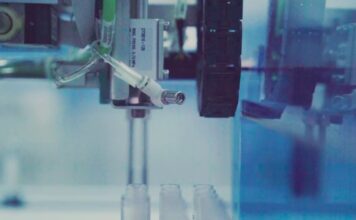There is no doubt, the light bulb is one of the inventions that have changed mankind. A look back at a formidable technological history which, over the past twenty years, has experienced an irresistible acceleration.
150 years ago, researchers worked on a brilliant idea that would have a huge impact on the way we use energy at home and in the workplace: the light bulb.
In the 19th century, lighting was still imperfect. The discoveries of the electric light bulb and its improvements will develop over several decades. In recent years, light-emitting diodes (LEDs) have revolutionized the world we live in.
Table of Contents
The invention of the light bulb
This invention radically changed the way buildings are made, increased working hours and transformed how we use public spaces. Like all great inventions, the light bulb cannot be attributed to a single designer. Rather, it is an accumulation of small discoveries made by different inventors that led to the creation of the light bulb that we use today to light our lives.
In this article, you will discover the history of the light bulb, from the first model which saw the light of day in 1835 to the incandescent bulb which was only a stage in the evolution of electric lighting.
Then came the fluorescent light bulb until the big breakthrough of LEDs in the 1990s. The latter made it possible to reduce energy consumption by more than 80% with a lifespan 25 times longer.
Incandescent light bulbs
Oil lamp, kerosene lamp, candle… Over time, Man has been able to develop different techniques to illuminate his environment. Limitless ingenuity that one day led to the formidable invention of the incandescent light bulb.
Long before the first patent filed by Thomas Edison in 1879 and the start of the commercialization of his incandescent bulb, British researchers had demonstrated that it was possible to produce electric light using arcuate filament bulbs.
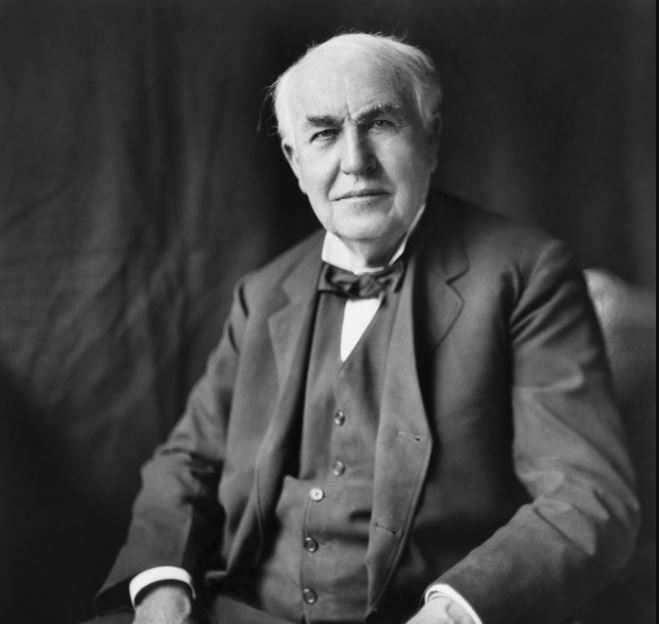
It was in 1835 that the first light bulb capable of producing continuous electrical light was born.
Following this, for the 40 years following this discovery, scientists around the world have studied the incandescent light bulb.
In particular, they worked on the filament of the bulb (the part of the bulb that produces light when it starts to heat up thanks to the electric current) and the gaseous atmosphere located inside the bulb.
It was then a question of finding a way for the air inside the bulb to escape easily in order to replace it with an inert gas. The aim of this maneuver was to prevent the filament from oxidizing and burning in the presence of oxygen.
The first models of light bulbs had an extremely short lifespan, they were very expensive to produce and used a large amount of energy. All these elements meant that, at the time, they were far from being able to hope for any commercial success.
When Thomas Edison and his team of researchers based in Menlo Park (California, USA) decided to enter the lighting scene, they devoted most of their work to improving the filament – testing first a carbon filament, then a platinum one, and then back to the carbon filament.
In October 1879, the team succeeded in producing a carbonized filament light bulb from cotton thread. This bulb with cotton thread filament had a lifespan of approximately fourteen hours thirty minutes.
A filament of bamboo
Thereafter, they continued their experiments on different types of filament until they managed to experiment with a filament made from bamboo! Thanks to this bamboo filament, Thomas Edison and his team managed to considerably increase the life of their bulb, which went from 14 hours 30 minutes to 1,200 hours! This filament became a standard for Edison’s light bulb over the next ten years.
The latter then continued to make numerous improvements to his bulb, including the installation of a new air evacuation system which made it possible to ensure that all the air present in the bulb was removed. He is also at the origin of the bulb screw system which, even after the emergence of many technologies such as halogen and LED, remains the most efficient system for bulb holders.
However, one cannot talk about the history of light bulbs without mentioning the names of William Sawyer and Albon Man who filed a patent for their version of the incandescent light bulb.
We can also mention Joseph Swan, the man who patented the incandescent bulb in England. These multiple patents filed around the world created an important debate at the time to know which of these patents prevailed over the others.
To avoid continuing to ask the question and embarking on endless legal battles which would have required significant financial resources and above all a great deal of time, the protagonists opted for the simplest solution: union.
It was then that the American company of Thomas Edison merged with Thomson-Houston Electric Company, the company which manufactured incandescent bulbs under the patent of William Sawyer and Albon Man.
They then formed a group called General Electric, which remains a big name in American industry today. For its part, Thomas Edison’s English company merged with Joseph Swan’s company to form Ediswan in England.
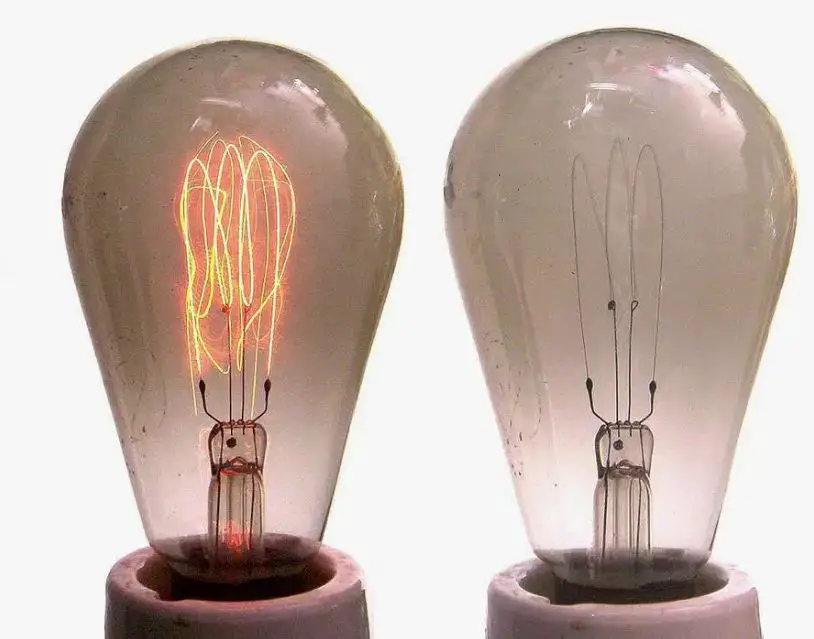
At the start of the 20th century, other inventors continued to make slight improvements to the incandescent light bulb, in particular improving its manufacturing process and its technical characteristics.
The big challenge came with the appearance of the tungsten filament developed by European researchers in 1904.
This new filament had the particularity of offering a longer lifespan and a clearer light, compared to the carbon filament used in previous models.
Planned obsolescence
In 1913, Irving Langmuir discovered that by placing an inert gas such as nitrogen inside a bulb, it was possible to double its efficiency. This represented a huge step forward at the time.
However, in the 1950s, incandescent bulbs still only converted a small amount of energy into light. Indeed, only 10% of the energy consumed by a bulb is used by it to produce light.
The bulb therefore remained very energy-intensive and its average lifespan was very short. The main models of the time held on average 1,000 hours.
Many believe that this was due to an intervention by the Phoebus Cartel which brought together the main lighting players of the time. It was rumored that the members of this cartel had agreed to maintain a low lifespan for their light bulbs in order to increase sales and therefore, increase their profits.
The real story of the Livermore light bulb
Livermore’s century-old light bulb is often cited as a counterexample to the alleged “planned obsolescence” decided by the Phoebus Cartel.
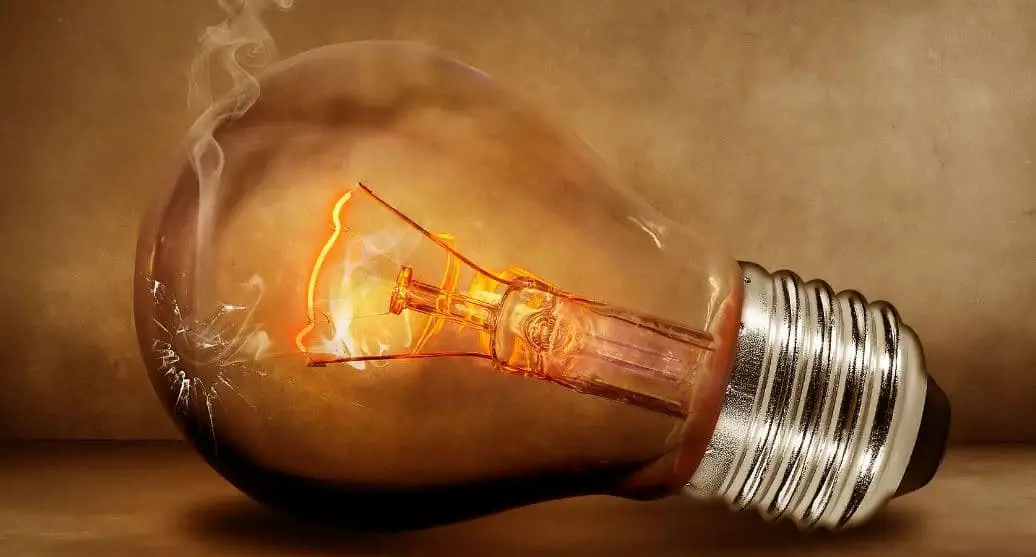
IVERMORE’S LIGHT BULB HAS BEEN LIGHTING A FIRE STATION FOR OVER 100 YEARS!
This light bulb, which made headlines a while ago, is located at a fire station in Livermore, California. The particularity of this exceptional bulb?
It has been lighting this barracks for more than a hundred years now, without its filament being burned or broken a single time! This bulb was produced by the Shelby Electric Company in Ohio in 1901, it is said to have been extinguished only twice.
Livermore’s century-old light bulb appears in Guinness World Records, known for its rigor. However, it is difficult if not impossible to determine with certainty the origin of this bulb and to explain its incredible lifespan.
Fluorescent light bulb technology
The incandescent light bulb was only one step in the evolution of electric lighting. After its innovation, scientists looked for other systems. Some wanted to find a way to operate a light bulb without filament.
In the 19th century, two Germans, the glassblower Heinrich Geissler and the physicist Julius Plücker discovered that they could produce light by removing all of the air present in a long glass tube, and by passing an electric current through it.
This innovation is known as the Geissler tube. The particularity of this formidable advance is the absence of a filament in the tube, the main element which until then ensured the production of light in an incandescent bulb.
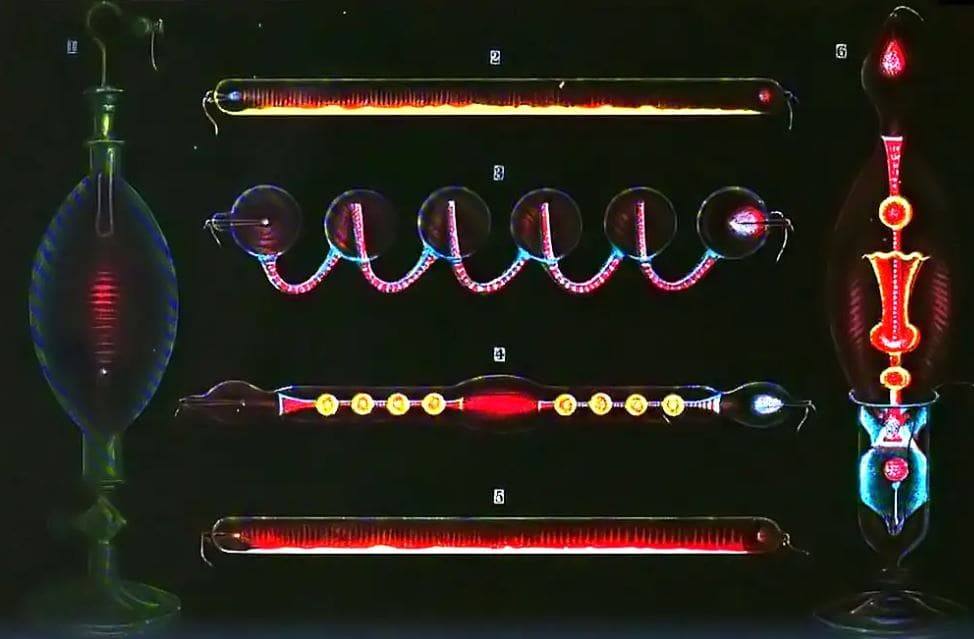
↑ COLOR DRAWINGS OF LIT GEISSLER TUBES. INVENTED BY GERMAN GLASS BLOWER HEINRICH GEISSLER IN 1857, GEISSLER TUBES WERE THE FIRST TYPE OF NEON LIGHTS.
- VAPOR DISCHARGE OF ALCOHOL
- FLUORESCENCE OF CALCIUM SULPHIDE
- URANIUM GLASS FLUORESCENCE
- STRONTIUM SULPHIDE FLUORESCENCE
At the same time, Thomas Edison and Nikola Tesla (inventors and scientists specializing in electrical energy) experimented with fluorescent bulbs in their respective workshops in the 1890s, but neither ventured to market these bulbs.
It took until the work of Peter Cooper Hewitt in the early 20th century to see a real breakthrough in fluorescent lighting technology.
Indeed, he created a model of fluorescent bulb capable of producing a blue-green light by passing an electric current through mercury vapor and incorporating a ballast (a system connected to the bulb regulating the current flowing through the tube).
Peter Cooper Hewitt’s fluorescent bulbs were more efficient than incandescent bulbs. But, at the time, they were of little use because of the color of the light produced. In other words, they were not suited to the customs of the time.
Lighting of the World Expo
In the late 1920s and early 1930s, European researchers experimented with phosphor-coated neon tubes (for ultraviolet absorption and conversion of invisible light to white light). These discoveries greatly helped researchers and American lighting companies who experimented with fluorescent bulbs at the New York World’s Fair.
These bulbs lasted longer than incandescent bulbs, and were generally three times more efficient. These exceptional characteristics are the main reasons for their rapid expansion around the world.
They were also widely used during the Second World War: the need for energy-saving bulbs in American munitions factories greatly contributed to their rapid adoption.
By 1951, the fluorescent light bulb was ubiquitous in the commercial environment, thanks to its exceptional technical characteristics.
Economical home lighting
It was an energy shortage, the world oil crisis of 1973, which prompted engineers specializing in lighting to develop a fluorescent light bulb that could be used in a domestic environment.
In 1974, engineers from the research and development department of the company Sylvania (manufacturer of lighting products) wanted to know how they could reduce the size of the ballast of a light bulb in order to insert it directly into the interior of the bulb.
The aim is to facilitate handling of the bulb by making it more compact. After they discovered the solution, they quickly set about working on a patent to protect their work, not knowing how to launch mass production of their discovery.
And for good reason, the material used at the time by Sylvania, and in general by all bulb manufacturers, was not suitable for the production of their discovery.
Two years later, in 1976, Edward Hammer, an engineer at General Electric, found a way to bend the tube into a spiral shape, creating the first compact fluorescent lamp (CFL) in the process.
At the time, like Sylvania, the General Electric group took the decision not to produce this bulb because the machines necessary for its production were deemed too expensive.
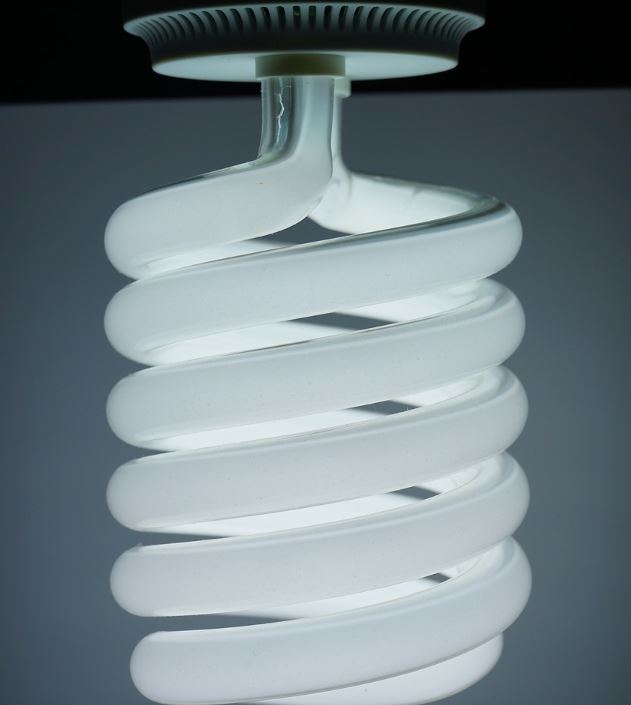
Compact fluorescent light bulbs were marketed in the mid-1980s at a price of $20/30, prohibitive for most consumers who were used to paying a few dollars for an incandescent bulb.
But the price was not the only problem: the first bulbs of this type were large and very bulky, they did not fit the sockets used at the time, they had low luminous flux, poor color rendering and were not compatible with a dimmer.
Since the 1990s, improvements to the LFC have been numerous. Among other things, they have made it possible to reduce the size, improve the design, reduce the ignition time and lower the price.
All of these advances have made it a serious lighting option for both home and commercial uses.
However, it is the promises of lower carbon emissions and lower energy consumption that, 30 years after their launch, have made the compact fluorescent light bulb far more popular than incandescent bulbs. Indeed, they use 75% less energy and have a ten times longer lifespan.
The never-ending rise of LED bulbs
With the arrival of compact fluorescent bulbs, the race for efficiency was on. Faced with governments and consumers who want to save energy, manufacturers have decided to work on ever more efficient bulbs. The latest evolution in the field and also one of the most significant: the LEDs.
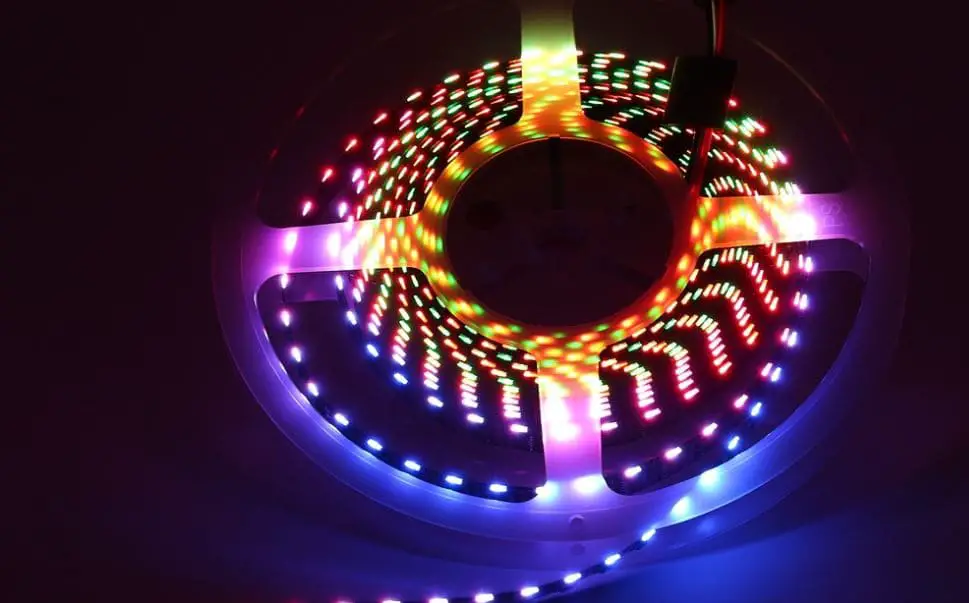
LED (Light Emitting Diode) is one of the fastest developing lighting technologies in history. So much so that the models follow each other at full speed on the market.
This is the case, for example, of 7.5 watt LED bulbs which, a few months after their launch, were replaced by a new, more economical 7 watt version. Model that will soon also be replaced by 6.8-watt LEDs.
These advances are certainly beneficial but constitute a real headache for consumers and retailers. It’s like Apple releasing a new iPhone every two months!
Considered a very efficient lighting technology, LED uses semiconductors that convert electricity into light. They are often very small (less than a square millimeter) and emit light in a specific direction, reducing the need for reflectors and diffusers typically used to direct artificial light.
Their explosion in popularity (at least among governments, early adopters and manufacturers if not the general public) is due to the significant energy savings offered.
At a time when states are bound by quotas governing energy consumption, LED bulbs represent an excellent solution. On the consumer side, energy consumption prices continue to rise to the detriment of their purchasing power.
To judge the efficiency of a light bulb, you just have to compare the amount of energy it consumes with the amount of light it produces. To do this, divide the amount of light emitted by a bulb (we talk about lumens) by the power it requires to produce this light (we talk about watts).
This gives a number in lumens (lm) per watt (W) or lm/W. In the case of a so-called 100% efficient light bulb in the conversion of the energy it consumes into light, we would obtain an efficiency level of 683 lm/W.
Let’s now take a tour of the main existing technologies, focusing on their level of efficiency. For the oldest existing lighting technology, namely the incandescent bulb, if we take a 60 W model we obtain an efficiency of 15 lm/W, by taking its equivalent in a compact fluorescent bulb we obtain an efficiency of 73 lm/ W.
LED bulbs, for their part, are excellent since they have an efficiency level between 70 and 120 lm/W. The most common models have an average efficiency of 85 lm/W.
The color light-emitting diode
In 1962, while working for General Electric as a scientific consultant, Nick Holonyak invented the first visible-spectrum light-emitting diode in the form of a red diode. Then green and yellow diodes were invented.
Manufacturers made many improvements to color diodes while optimizing their manufacturing process. In the 1970s, these diodes then began to be used as a light indicator or even as a calculator display screen. Despite this, color light-emitting diodes had only a few areas of application.
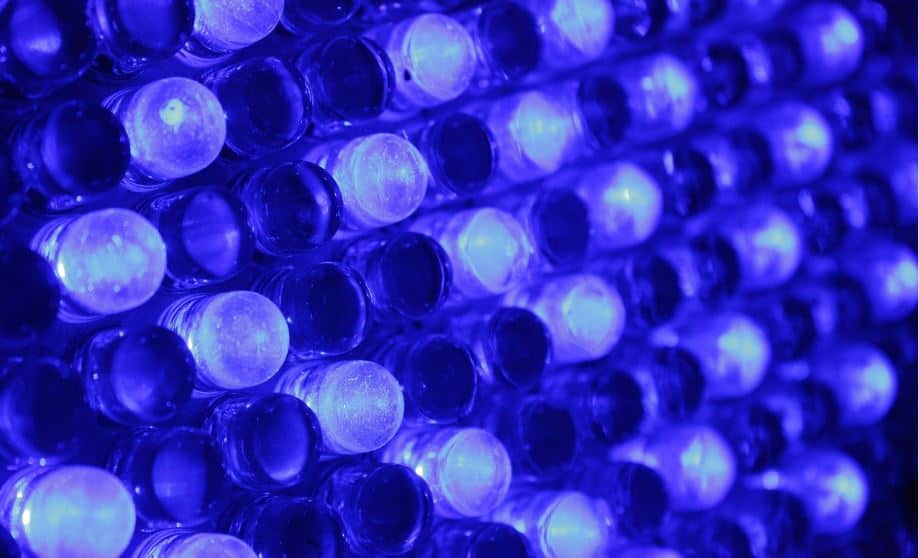
The biggest breakthrough in LEDs came in the 1990s when a trio of Japanese researchers invented the blue diode. Professors Isamu Akasaki, Hiroshi Amano and Shuji Nakamura succeeded in inventing what several large companies sought to develop for many years by investing significant human and financial resources in it.
This trio of researchers was also awarded for their discovery by receiving the Nobel Prize in Physics on October 7, 2014.
The discovery was made in two stages: the first consisted of experimenting with different materials for the manufacture of semiconductors used in light-emitting diodes.
Professors Isamu Akasaki and Hiroshi Amano discovered that gallium nitride crystals produced blue light, all placed in a sapphire-based structure.
Professor Shuji Nakamura, meanwhile, provided the missing part of the work four years later with the method to reduce the crystals to a suitable size for commercial use. He made this discovery through clever manipulation of temperature.
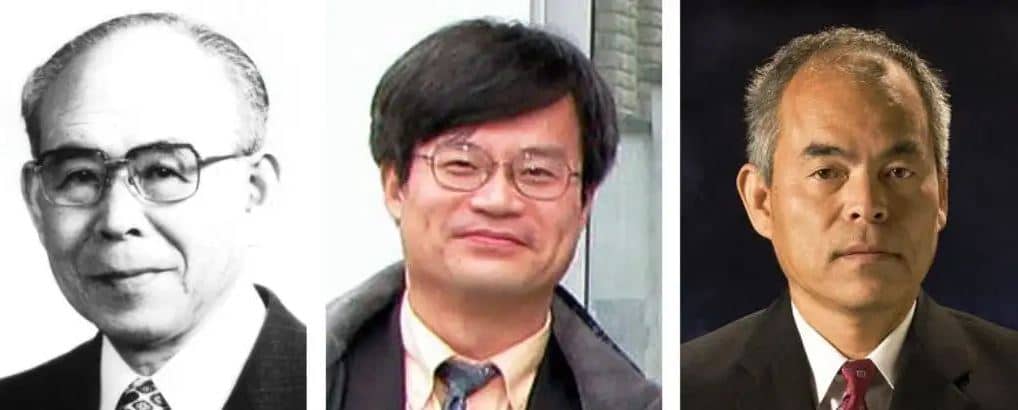
The contribution of their work to the field of lighting is invaluable. Without blue LEDs, the three primary colors couldn’t mix to produce the white light we now see on computer or television screens.
In addition, the very powerful blue light could be used in combination with phosphorus to produce white light closer to natural light, these are the research bases for the next generation of light bulbs.
LED in the Daily Life
Since 2008, the price of LED light bulbs has dropped by 85%. In addition, today’s LED bulbs are six to seven times more efficient than conventional incandescent bulbs. In comparison with the latter, light-emitting diode bulbs reduce energy consumption by more than 80% with a lifespan 25 times longer.
These advances have enabled a rapid expansion of LED light bulbs in recent years in both commercial and domestic application areas. Most of the government establishments switching to LED lighting for power consumption recusing policies and due to the increasing energy prices in recent years.
Recent Innovation and Invention in lighting
In recent years, LED lighting bulbs has been greatly dominating the lighting market. Even though there are some new technological advancement in the field of light bulbs and LEDs, there are also some notable breakthroughs in lighting technology.
LumiFree Energy Saver Lighting Technology
LumiFree is a new generation of lighting technology just recently developed by a Japanese company Japan Display (JDI). We have a dedicated article about LumiFree.
According to the company, LumiFree is a new method to control the new liquid crystal materials, changing the refractive index to control the light distribution characteristics thus the direction, brightness and shape of the luminosity of the light. This technology is based on LED lighting as well but it significantly changes the ability to control the LEDs.

